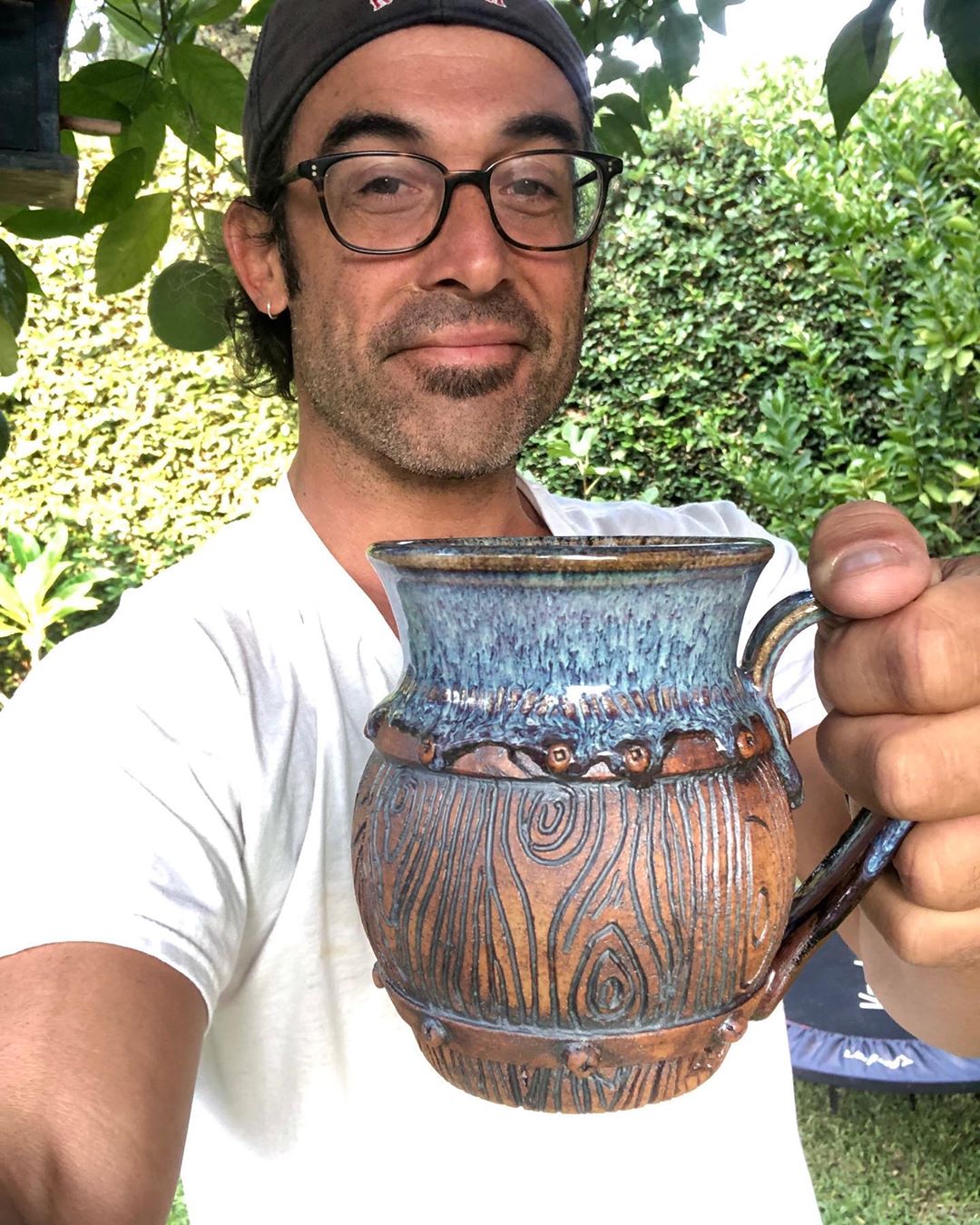Podcast: Play in new window | Download
Nick LaPointe | Episode 667
Nick LaPointe has been making pottery for a handful of years and focuses mostly on functional ware. Nick enjoys the texture created from carving into clay and experimenting with combining glazes.
SPONSORS
 You can help support the show!
You can help support the show!
Number 1 brand in America for a reason. Skutt.com
For all your ceramic needs go to Georgies.com
Do you have any way of marketing to your true fans other than the social media platforms that you have chosen?
Are there any other ways I can communicate or connect with them?
Yes, I am thinking about email marketing. You can’t own your followers so I am asking is there any other way that you are able to communicate with them other than through the platform you are using?
Well, I’ll tell you that yes, that is great way to do it and that is a way a lot of my potter friends do online. If they don’t build something they’ll just get a gmail address together and say in their post, you know, they’ll post a brand new piece and in the notes underneath they will say, Boom! This piece just cam out of the kiln. I love the way it looks. I have more coming out. Sign up for my monthly update and I will let you know when my next batch comes out. So that now takes fan say, outside of Instagram or perhaps Youtube if that is where they are building their base and now they are connected on an email. So when the next batch comes out or something new they are going to do, or say they are going to be selling their stuff at a farmers market or if they are going to be somewhere else they can shoot an email to their entire base saying, Hey I am going to be at this place in the valley or just some sort of update on what’s happening with them. and that’s how they can connect and communicate with them. And I know a lot of my friends have had much success from that so that’s a way to do it.
That’s how your friends do it but how do you do it? How do you connect outside of your chosen platform. which I think is mostly on Instagram, correct?
That’s correct.
So how do you connect with them?
I keep it within that sphere. I have another Instagram account which is just personal and for friends and family. All my friends on the east coast and family, they can see my kids and stuff. But as far as the people that are following or interested in the growth of my pottery. That’s the hub. And for me at the consistency level I am at, you know, having primary employment doing something else, that is really all I need. Because I am really a small batch potter. I have friends that, this is what they are doing. Their garage is set up with their kilns and they are throwing all the time and they have racks and racks of mugs and it’s working for them really well. Those are the people that upgrade to say an Etsy site or build a website or something like that. It doesn’t take that much effort but I kind of like the level that I am at right now. I can manage the interactions and the activity that’s going on and answer people.
What kind of consistency does it take to be able to keep the interest going with your followers?
I would say, uploading something or having the activity at least once every other day. Some people have success by putting daily updates in their stories. A lot of potters do that. Where they will upload what they are doing, where they pieces are in the kiln firing, all those things in the stories, because a lot of people view that rather than photos that are uploaded. I would say every other day. Some people do it every day but consistency, high frequency, helps grow the fan base. And providing different elements of the process, even if it’s a different angle of a piece. I myself, I primarily make mugs, really simple, each one can have a different angle, can have a different look, can have a different glaze that comes out just so choice that needs to be featured. Consistency, high frequency, is really good and communicating with your fans.
When you unload the kiln do you take photos and backlog a schedule for every other day so you are not having to take a picture and post it but instead you have a backlog in your phone that you can go through?
Good question. And it didn’t used to because I didn’t have that much coming out of the kiln but now I do. I will take many photos, especially if they are unique and there is something special about them. You know, say there is a theme about a batch that comes out, maybe I will throw them out on one load so people can see different types of techniques that were used if that interests them. Oftentimes like today, I took a photo of a mug maybe a week ago but I did that because I know it made it’s way to it’s new home and I took a photo so they could see it and that’s just a way to interact.
How often do you let people know that a piece is available to be sold? Do you do that every time you post a piece? How often do you do it?
Well, that’s the thing. I would say 95 percent of my pieces are bought before they are even made. So it’s a weird thing. So I will post something and someone will say, Hey, I love this. Is it for sale? And I say it’s not but I can make you one just like it. And they say, Okay, great. So we communicate through direct message or whatever and that person purchases that mug or something that will be very much like it and it will be out in like a month. A lot of potters what they do is they build a batch of 12 or 24 and announce to all of their followers that they have a bunch available and then they sell them like that. But at this time, where I am at, I do it a little different and it’s working out.
What’s the mechanics of the sales? How do they get money from their bank account to your bank account?
Primarily through Venmo or Paypal. But I have had a couple of people that don’t use either. They send me checks or whatever. Pretty much everyone uses either one of those two.
Because most of your sales are pre-sales do you ever feel pressure to get in the studio and to your buyers?
I do sometimes. But because I am a small batch potter, like right now I am making a certain style and I will change it up every now and again and when that change happens I have a bunch of new people saying, Hey, that’s different, I would love one of those too. And these are all previous buyers. These are people who are just collecting the mugs. So I feel it sometimes but the level that I am at and the way I’ve set up timing and spread out making mugs and stuff like that, I still get a lot of enjoyment of just throwing a piece and seeing where it’s going to go. Seeing if it’s going to be big and fat or seeing if it’s going to be narrow, or how it’s going to be with a different type of clay or different type of glaze, so I’m fortunate to have my followers be very flexible because I will make something that’s different than what they anticipated and I will say, Hey this is what came out for you. And they will say, I love it, fantastic. Even if it’s different so it’s been working out. Every now and again there is some pressure especially if a lot of orders come in. I’m kind of chill too, I try to keep things stress free.
Book

Make Way for Ducklings by Robert McCloskey
Contact
Instagram: @nickspottery






















